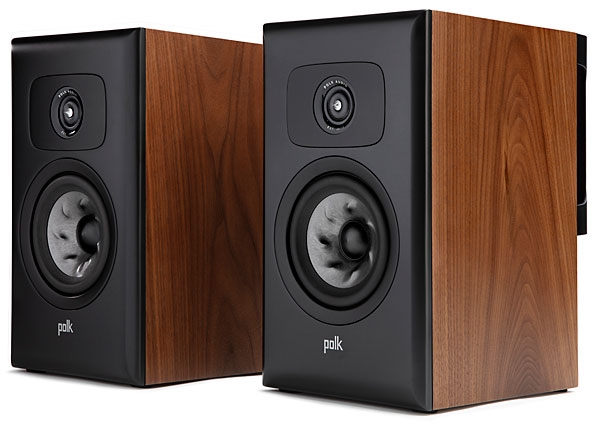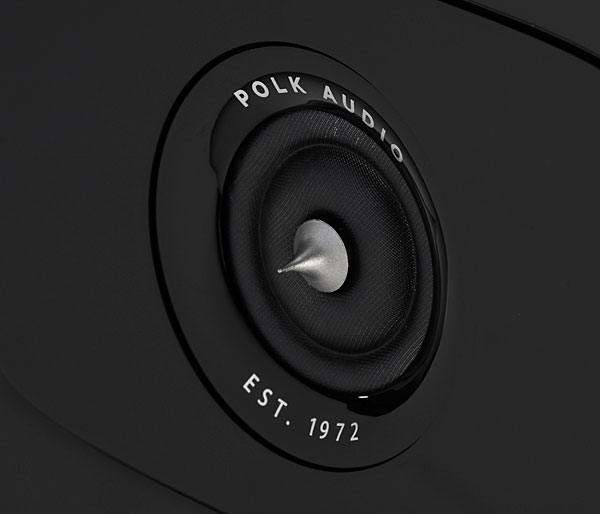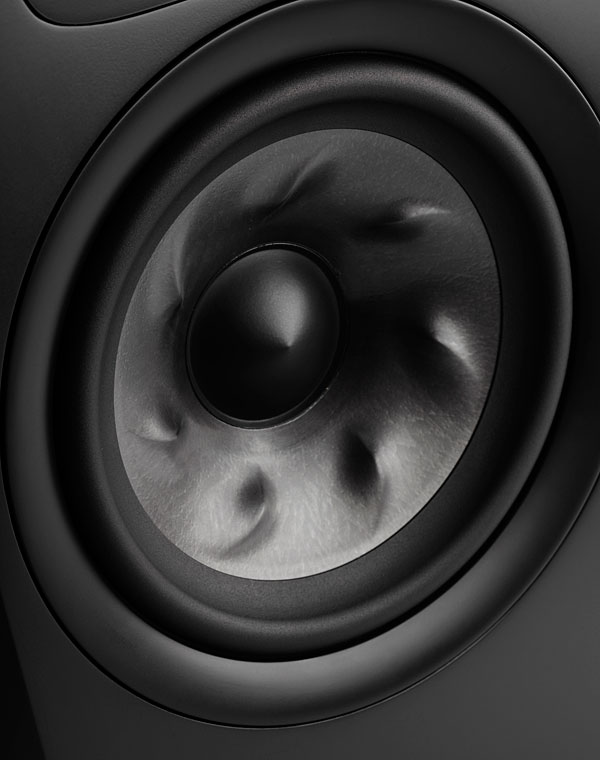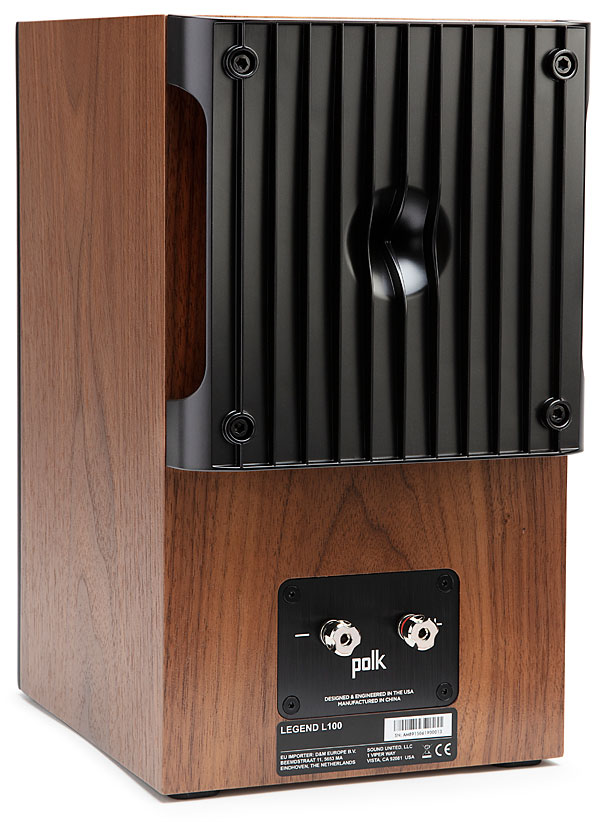| Columns Retired Columns & Blogs |
Great review and once again my bank account is fortunate that my affinity for SE Tube amps limits my speaker choices.

COVID-19 notwithstanding, summer—warmth, flowers, leaves on trees—has descended on Greenwich Village, my New York City home for the past 30 years. What hasn't descended are tourists, belching motorcycles, behemoth sports cars, beer drinkers, and the usual summer hell-raisers, the sort that would've sent legendary Village bohemians Kerouac, Ginsberg, and Burroughs running back to their cold-water flats.
With these absences comes something unique to my downtown experience: peace and quiet. As I write this, in early June, the streets are mostly empty, birdsong seems pleasantly amplified, and my neighbors seem more relaxed and convivial.
The famous 93-year-old Caffe Reggio, whose customers have been moved out to the street in obeyance of the city's Phase 3 reopening rules, can breathe.
This diminution of noise and increase in quiet makes high-fidelity listening a more relaxed indulgence. I can immerse myself in listening, for work and pleasure, to a degree that seemed impossible here a few months ago. Into this solace and sanctuary comes the Polk Audio Legend L100 bookshelf speaker ($1199/pair).
When Polk Audio was founded, in Baltimore, Maryland, in 1972, I was barely a teenager, but I already considered myself an audiophile. My audio buddies lusted after (and occasionally possessed) brands such as NAD, KEF, Phase Linear, Bang & Olufsen, and JBL, including its famous L-100 studio monitor. In those days, Polk Audio's hyphenless L100 loudspeaker was still decades in the future, but company founders Matthew Polk, George Klopfer, and Sandy Gross (who later founded Definitive Technology and GoldenEar Technology) began their company by designing a PA system for a bluegrass concert.
The first Polk Audio loudspeaker, the Model 9, arrived in 1973, followed soon after by the two-way Monitor 7 and Monitor 10. Both of those featured 6.5" mid/bass drivers with rubber surrounds and passive radiators. Many followed. Polk's design patents piled up, including the one for SDA (Stereo Dimensional Array), which fed a modified version of the left-channel audio to the right channel and vice versa and was important in later models. The company grew and, in 1986, held an IPO. Production moved from Baltimore to Mexico. At one point, Polk almost bought the holding company that owned KEF. That didn't work out, but they grew, entered the automotive and home-theater markets, and won distribution in Best Buy stores. In 1999, they went private again and in 2007 were bought by Sound United, which also owns Denon, Marantz, Classé, and several other brands, including one of Sandy Gross's other former companies, Definitive Technology.
The L100 and its larger sibling, the L200 ($1799/pair), are part of Polk's highest-priced "Legend" series, which the company describes as the "Best Speakers Polk Has Ever Made."
Design
The two-way, ported L100 stands 13.6" high × 7.8" wide × 11.3" deep. Its sensitivity is specified as 85.5dB/W/m, its nominal impedance as 3–4 ohms. Recommended amplifier power is 70Wpc. Its driver complement is a 1" "Pinnacle Ring Radiator" tweeter and a 5.25" "Turbine" polypropylene-cone mid/bass unit, crossing over at 2.9kHz via an "Orth" crossover, named for Polk Audio's Scott Orth, an engineer who has been with the company since 2000.
"All Polk loudspeakers and drivers are designed and spec'd by Polk engineering, including entry-level products, in Baltimore, Maryland, and Vista, California," Bronson Gannon, Polk's global marketing manager, told me in an email. A team of about 40 engineers also do all the company's mechanical and acoustic research, including crossover development, transducer design, development, and testing. The industrial design is done in Vista, near San Diego. The Legend-series speakers are built in China.

The L100’s Pinnacle ring-radiator tweeter is constructed of a proprietary material from Kurt Mueller in Germany based on an open polyester weave with special coatings and treatments; the tweeter has a center waveguide/phase plug that resembles a small Hershey's Kiss, which is claimed to improve the tweeter's dispersion for a bigger sweet spot. (The tweeter is also slightly recessed with a waveguide—a sort of shallow horn—around the circumference.) An internal copper cap behind its ring-radiator diaphragm ostensibly reduces "inductance and flux modulation" to increase high-frequency output and lower distortion; the quote is from a diagram provided by Polk. The tweeter is sealed in its own chamber, which is filled with damping material, suppressing a resonance at 2.5kHz, just below the crossover frequency.

The L100's 5.25" mid/bass driver's "foam-core polymer injection cone," which is imprinted with seven evenly spaced ridges, is described in a Polk white paper as having a "chewy center" and a "crunchy outside." "We wanted to dramatically improve imaging and mid-bass" performance, so they redesigned the mid/bass driver used in the LSiM series, Gannon explained: "This is the third generation of this cone. The challenge is to cost-effectively develop a cone that is well-damped, stiff, and very lightweight. The Turbine cone is made of aerated polypropylene. We changed the formula [of the cone], improved the [internal] foaming, and added the ridges that give it the turbine shape. The ridges add stiffness, and the [internal] foaming added dampening, both without adding mass." The surround is made from nitrile butadiene rubber.
The L100 cabinet is constructed of MDF that varies in thickness from 1" to 1.5" and is "extensively braced," Gannon noted. It is finished in real wood veneer. "We used a laser vibrometer to analyze cabinet resonances." The mirror-like piano-black finish of the L100's baffle is achieved by layering five coats of paint and clearcoat, buffed and polished between coats. Stretchy black grilles affixed by magnets were provided, but I didn't use them.
The L100's rear-firing port is unusual. Screwed to the back of the L100 cabinet, the "Enhanced Power Port" features a central diffuser similar in shape to the tweeter's Hershey Kiss but pointing in instead of out; it was designed to reduce chuffing at high volumes and diffuse air from the port tube to "more evenly distribute bass frequencies and aid in easier speaker placement," Gannon said. The whole structure looks a bit like a flanged heatsink, measuring 8" × 8" × 1.5".

Setup
Polk recommends toeing in the L100s to point directly at the listener, forming an equilateral triangle with the speakers and your listening chair at the vertices. I plopped the L100s (on their oblong rubber feet) on my 24" wooden Target Audio stands and eventually, after some testing, sited them about 3" behind the blue-tape outline John DeVore left when he installed the DeVore Fidelity O/93s in my room, 32" from the front wall. I found that the L100s sounded best placed 71" apart, tweeter to tweeter, 61" from my listening seat. That is where I left them.
I used three amplifiers to evaluate the L100s, which I will describe below. I played exclusively discs, spinning on my Kuzma Stabi R turntable (stationed atop Kuzma's new PLATIS 65 isolation platform), read by my Hana ML MC phono cartridge riding on my Kuzma 4Point 11" tonearm. Phono equalization and preamplification were provided either by (integrated) amplifiers' built-in phono stages or by the Tavish Design Adagio Vacuum Tube Phono Stage ($1890). Speaker cables were by Auditorium 23. Single-ended interconnects were by Shindo Laboratories and Triode Wire Labs: the Spirit IIs.
Listening
Over two weeks of speaker break-in, playing Spotify via my laptop, 24/7, the L100s gradually got over the sludgy midbass sound and dull treble I heard when I first started them up and sent them music. After that, they imaged beautifully, were dynamic as the dickens, recreated a satisfactory soundstage, and provided very respectable bass weight and extension—indeed, exceptional for their size. The Polk was very transparent to amplifiers and recordings.
To my wonder and pleasure, the L100—like the late '70s-era Spendor BC1s I recently purchased—pulled off the rare trick of reminding me of live music. As Stereophile founder J. Gordon Holt wrote of the BC1 in 1978, "despite their manifest shortcomings, these speakers can recreate the gestalt of live music." The L100s also did gestalt.

Great review and once again my bank account is fortunate that my affinity for SE Tube amps limits my speaker choices.

Of course, now I need to know more about that L200 and that new KEF LS50!
What a great time for standmounts at humanly kind prices!
Thanks for a killer review that is foundational in its category.

... minimum amount one must pay, today, for a new pair of speakers that are not manufactured in China?
The Dynaudio Emit M10 is made in Denmark and is priced at $799/pr.
Is there anything else that is less expensive?

a person could buy a used pair of Magnapan MG3s w/ribbon tweeter and existing support from the manufacturer.
Just purchased a pair in Miami for under $799.
Are we suggesting that transducer performance has significantly improved over these last 3 or 4 decades? I can't see how it has, in any meaningful way!
What has changed is the cost/price structures and designs featuring lower cost materials. Shipping Costs have skyrocketed mandating designs that optimise shipping & warehouse efficiencies.
China offering labor at 1/10th to 1/20th the Cost of Domestic Labor allows Manufacturers a Quarterly Profit attractive to Venture Capitol.
This Manufacturer's decision makers are selling/diluting their Brand Name for short term gain. ( expect long term pain and low residual dollar values )
Tony in Venice

Focal Chorus 706 (and matching S700 stands).
Cheap and quite great. Made in France! (assembled in France and shipped from France using European MDF for enclosure)
I have them and I can't think of anything comparable for the price. They are of higher build quality than my JBL L890s made in Mexico.
I know that the bottom driver is made in China though but is a Focal exclusive too, not off the shelf. I believe the tweeter is even manufactured in France.

... discontinued models, then we can do even better on price.
The Focal Chorus 605 is still available in new condition for $300 or $349/pr.
https://www.safeandsoundhq.com/collections/focal/products/focal-chorus-605-two-way-bookshelf-speakers-pair
https://upscaleaudio.com/products/focal-chorus-605-bookshelf-loudspeakers-pair
https://www.focal.com/us/high-fidelity-speakers/chorus-600/chorus-605

..assembled in Denmark? Dynaudio is owned by Goertek, a large Chinese company, and does a lot of its driver and cabinet manufacturing in China. Given the cost structures of manufacturing in Scandinavia, I'd bet that the majority (if not all) of the parts for that speaker are sourced out of China, and the rather simple final assembly work is done on a small line in Denmark. The loudspeaker company I worked with in Scandinavia also did this kind of OEM work for a number of well known brands.

... "made in XYZ" label really means "assembled in XYZ from foreign and domestic components".
For example, the British-made Harbeth speakers include tweeters sourced from a company based in Scandinavia and crossover capacitors (other than those for the limited-edition Anniversary models) sourced from a company in Hong Kong.
So, do their speakers deserve to be called "handmade in England", as it states on their website?
In any event, the Dynaudio speakers are labeled "made in Denmark" and the Focal speakers are labeled made in France" - for whatever that may be worth.

Emit
Designed, engineered and assembled in Denmark
Found in both the user guide and the literature.
Where does it say "made"? I always thought that this required that a majority percentage of the individual parts be made in that country. E.g., Made in USA requires at least 50% to my understanding. I'd bet it's at least that high for DK, if not higher.

... the Dynaudio Emit M10 is "Made in Denmark"?
Did it ever occur to you to look on the speaker?
Obviously, not.
https://images-na.ssl-images-amazon.com/images/I/71H2o4tFwFL._AC_SL1500_.jpg
https://www.avprofessionals.in/wp-content/uploads/2020/04/emit_m10_satin_black_back.png

it's Legalese sort of language.
Legal advisors are nudging EVERYONE into the Non-descriptive phrasing of doubt. All except China where there is no doubt that Chinese stuff is made in China, they say it on everything they make. Everyone else hides the china sourcing. ( for dam good reasons: Made in USA equates to 35% better Sales )
The Made in China label signifies the Race to the Bottom.
There are quite a few super high quality Chinese Brands being sold here and globally but they don't have the Glamor Branding of Traditionals like Polk and they don't get reviewed by our better reviewers, Mr. HR the exception.
If Stereophile had a specialist reviewer only reviewing/ reporting on Asian Brands it would be an exciting thing. China has some outstanding gear at Schiit level price points .
Tony in Venice

I asked my local Hifi Specialist to check the labels on the back of his Demo Emit 20s. It says „Made in China“. He also told me that nowadays all cabinets for Dynaudio loudspeakers are manufactured in China, even for the fancier Evoke and Contour loudspeakers.

It's probably great for Wall Street but it's Hell on our Main Street.
It feels like an old friend giving us the middle finger, after all these years.
Tony in Venice

As JA noted ring radiators despite their extended response become beamy.
Therefore I am still with the KEF LS50 and its wide, uniform and Extended response as the
ultimate mini monitor.
Is Stereophile going to look at the new Meta version?

"As JA noted ring radiators despite their extended response become beamy."
I suspect that means they might not be as good for near-field listening, but am not absolutely certain.
These, and the L200s, are getting good reviews. But it seems I'm seeing more reviews for the 100s. Are they considered better?
What happens if you take of the back plate and just let the port fire straight out?
Just a couple of questions.

@dougspeterson:
Yes. Please see John Atkinson's comments at https://www.stereophile.com/content/recommended-components-fall-2020-edition-loudspeakers on September 26, 2020 - 8:29am and on September 28, 2020 - 11:00am.

If Polk has really managed to improve their drivers over their previous series, why couldn't they just offer an improved lsim703, which everyone seems to love? Why do speaker companies always throw away their good old designs? For example, why did Revel go from making the nearly-perfectly-measuring M20 to speakers with smaller cabinets and much less perfect measurements? I don't understand this idea of "progress."

The LSiM series is justly lauded, but nothing sells like a whole new model with new reviews in the audio press. Time will tell if 'this year's model' is actually an improvement or just another lateral move with short-term profits in mind.

It's the same reason Def Tech redesigned their speakers as well, the LSiM had Sandy's name is all over them (LSiM Series). Those and Def Tech Mythos, seem like precursors to the Golden Ear brand. Polk and Def Tech moved away from them. Speaker brands change - sometimes for the better, others for the worse. Some have died because of nostalgia - it didn't look and adhere to the principles of the old stuff even though they measured well (Thiel anyone, happened to Infinity too). That's what happens.

for someone who used a laser vibrometer in the design process to specifically eliminate those resonances(And bragged about it). I would love to hear the designer's take on John's measurements regarding this issue.

I'm more troubled by the port resonance than the cabinet resonance. I'm guessing it's more likely to be audible.

..it's technological resources, the port resonance and cabinet vibrations are pretty interesting observations for a relatively expensive design. Audible or not, it implies some sloppiness in the engineering process. If a company has already invested in the technological resources, it's not the least bit costly to do it right.

Not to pick on Polk in particular (as most first world companies seem to be guilty of this) but it really troubles me (having worked in the UK & US defence industry) that high value intellectual property* is being given to a potential foe. This didn't happen during the Cold War, why is happening now** (was it Nixon in China?), perhaps someone can educate me?
*You may say it's just a loudspeaker but to get to this level requires the same skills that can be applied to other less peaceful devices.
**I fully realize this has been steadily going on for forty years but I've never seen an explanation as to why.

I have the L100s and very much enjoy them with SS. After 30years of SS I want to try tubes and of my 4 speakers sets I want to try the L100s with tubes.
Ken mentions how well the Cary SLI80HS works with the L100s, however, since this will be my entry into tubes I want to try something a little more affordable (<$3000 new). Can anyone suggest FROM EXPERIENCE a tube integrated? Thanks.
Ken - very nice review. Enjoyable read.